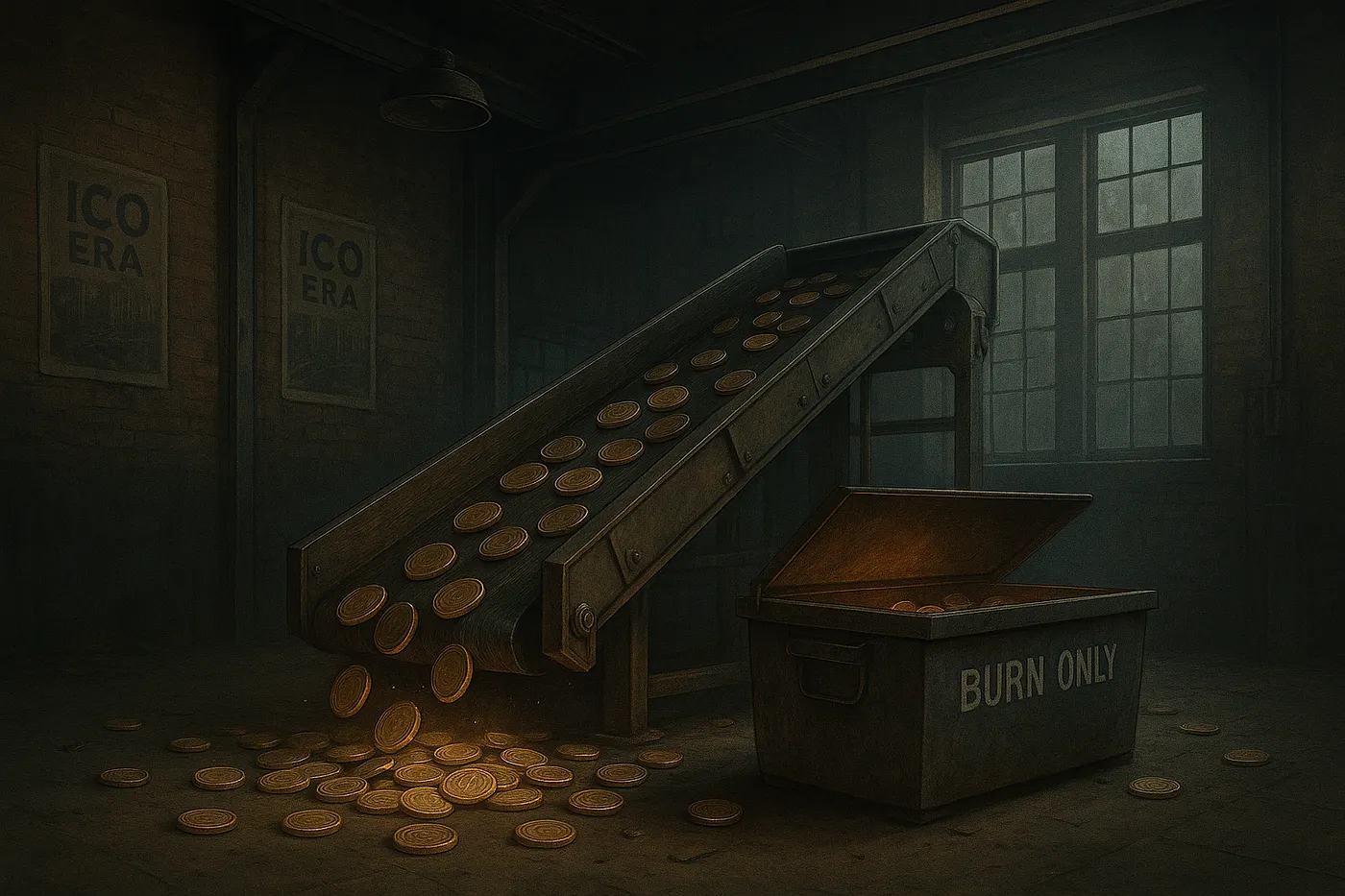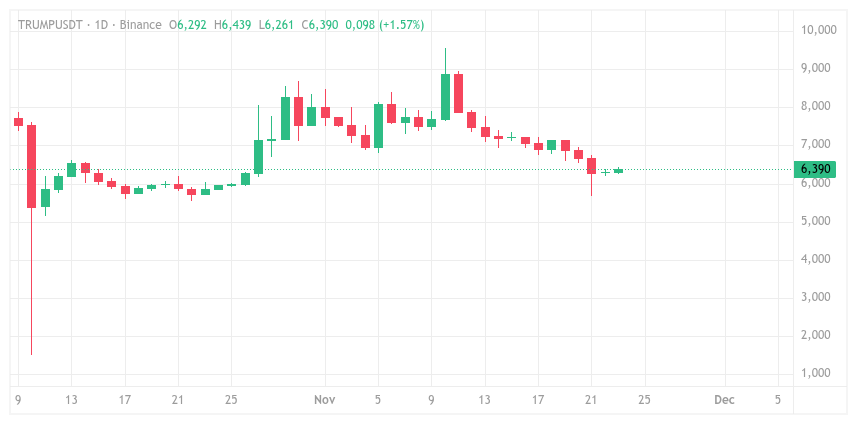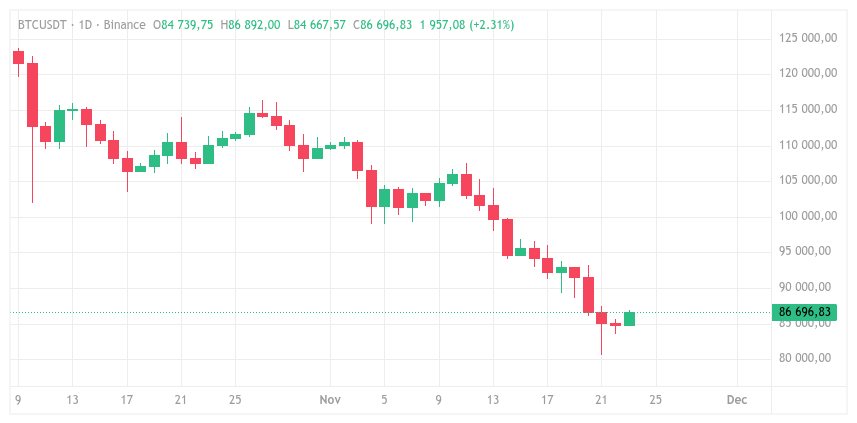
Why Not Burn All the Tokens? Part II
A week ago, I noticed a curious trend: many crypto projects that once eagerly minted and sold their own tokens are now announcing plans to buy them back and burn them.
What’s going on? Could it be that critics were right all along — that these tokens were never really needed?
If you haven’t read Part I, check it out first — it explains what tokens are for and why the question of burning them is even on the table.
Now, let’s continue.
When Does Token Burning Make Sense?
First, let’s clarify what “Burning” means: it’s the process of permanently removing tokens from circulation, usually by sending them to a special address with no private key. If total supply shrinks while demand stays constant or rises, basic economics suggests the remaining tokens should increase in value.
That’s why burning has become a popular tool for managing price in crypto economies.
But it’s not a magic solution for falling prices. Burning is only effective in context. If a project lacks real value or demand, burning alone won’t help. A rare token with no buyers is still worthless.
Burning works best in sustainable, profitable protocols with excess revenue. In such cases, buybacks and burns can be an added bonus. Without fundamentals, burning just hides the underlying problem.
Still, even for projects without real value, burning can still serve a purpose.
Utility Tokens and Reward Tokens
Take a simple case: Brave browser and its BAT token.
At first glance, BAT looks central to the product. Project team painted a picture where BAT is essential:
- Advertisers pay in BAT
- Users earn BAT for watching ads
- Content creators receive BAT for hosting ads
Sounds good. But if you’re just a regular user or creator, things look different. Why do you need BAT? You can’t use it in a store, and it has little value outside the Brave ecosystem. You don’t want BAT — you want real money.
If Brave paid you in BTC or USDT instead, your experience would be simpler.
BAT is useful to Brave’s developers — not its users. It helps them raise capital, create marketing narratives, and gamify engagement. But for users, it’s just another abstraction that complicates what could be straightforward.
BAT is a textbook example of a reward token. But similar issues plague many utility tokens too. They promise features but mostly help developers raise money.
If users wouldn’t notice the difference if the token were replaced with any other crypto — it likely exists to fund the project, not power it.
And that’s where the core question arises: once funding is secured and spent, isn’t it time to start burning?
If a project is profitable — even slightly — maybe its team should buy back and burn tokens. That would clean up the economy and reward a community that’s probably weary of watching prices fall.
Meme Tokens
Meme tokens are a different story. Most aren’t tied to any product or business. One exception is Shiba Inu, which began as a meme but evolved into a full-blown ecosystem used for transfers — because AML trackers don’t take it seriously and nobody’s likely to flag it as “dirty”.
But most meme tokens were launched without purpose or plans. So there’s no one to buy them back — and no reason to.
They might get burned by holders cleaning out their wallets, like CZ has done publicly. But there’s another angle: many meme tokens were created in huge quantities. Burning excess supply might be useful to those holding large stashes.
Think back to the Great Depression, when manufacturers destroyed goods to stabilize prices. Meme tokens face the same dilemma: sell a large chunk and crash the price, or burn most of it and sell the rest at a better rate.
Take the TRUMP token — it has a supply of 1 billion. Are there really a billion Trump fans in the world eager to hold a token as proof of their political leanings?
Then again, maybe there are. Someone’s still buying it! During the October 10 market dip, TRUMP fell to 1.50 USDT on Binance — and has since quadrupled.

Meanwhile, Bitcoin dropped to 102,000 USDT that same day and is still down 15% from that level.

So TRUMP is holding up better than BTC — at least for now. No need to burn it yet. But most meme tokens are doing far worse, and might as well be burned out of mercy.
Governance Tokens
Governance token burning is the hottest topic of all. On November 10, after Uniswap Foundation and Uniswap Labs proposed a tokenomics model involving gradual UNI burns, the inventor of the Uniswap protocol suggested going even further — and burning 100 million tokens outright.
If tokens give governance rights, burning them increases the voting power of those who remain. Those uninterested in governance get to cash out. Those who care gain more influence.
But what if we went all the way — and burned all governance tokens? That would halt governance entirely and return crypto to its DeFi roots: immutable smart contracts with no human interference. Code is law.
No one is seriously pushing that idea. But maybe they should.
RWA Tokens
Now we get to the one category where burning seems to make no sense: tokens representing real-world assets.
These tokens are proof of obligation by the issuer. Burn the token, and the asset stays with the issuer while the obligation disappears.
That said, burning also happens legitimately — when the holder redeems the token. The issuer fulfills the obligation, and the token is burned. That’s fine.
Take stablecoins, for instance. What happens if every holder of USDT, USDC, or USDP tries to redeem them?
- Tether will say: only the entity that minted those tokens may redeem them.
- Circle will require corporate KYC and a lengthy compliance process.
- Paxos is more flexible, but still bans users from restricted jurisdictions — possibly including your country.
Until you try to redeem and burn, you may not realize how tricky it is. That’s why I recommend: before stockpiling any “backed” token, try redeeming a small amount. If it works smoothly, then invest more.
By the way, on rabbit.io you can easily swap small amounts of USDT, USDC, USDP and similar tokens, which are possibly hard to redeem, for more transparent stablecoins like DAI or LUSD. Once you’re confident in redeeming those, come back to rabbit.io for a bigger swap. We offer the best rates and no limits.
Back to RWA tokens: here’s one final thought. Holders should organize a flashmob — all trying to redeem and burn at once. That would reveal who can actually deliver on obligations.
Of course, that’s unlikely. But without stress tests, token issuers will slowly become like banks — where withdrawing large amounts of cash is nearly impossible.
Conclusion
It seems like the logical outcome is: maybe most tokens should be burned.
- Utility tokens — once they’ve served their role in fundraising.
- Reward tokens — because they usually just complicate the user experience.
- Meme tokens — because most were overissued and lack real demand.
- Governance tokens — because they turn decentralized systems into shareholder-style boards. If only some are burned, control becomes even more concentrated.
- RWA tokens — because without burn/redemption trials, there’s no way to verify issuer integrity.
In the end, burning isn’t just about boosting prices. It’s about facing the truth: most tokens don’t have their own value.
Some do, of course:
- Stablecoins help ride out volatility without leaving the crypto ecosystem.
- Governance tokens like DYDX help users develop and improve crypto projects.
- Exchange tokens offer tangible perks like trading fee discounts.
Ironically, burning started in the one area where tokens had real value — but now it’s spreading to the many where they don’t.
Thanks for reading! Don’t forget to follow me on Medium — there’s a lot more to come.













